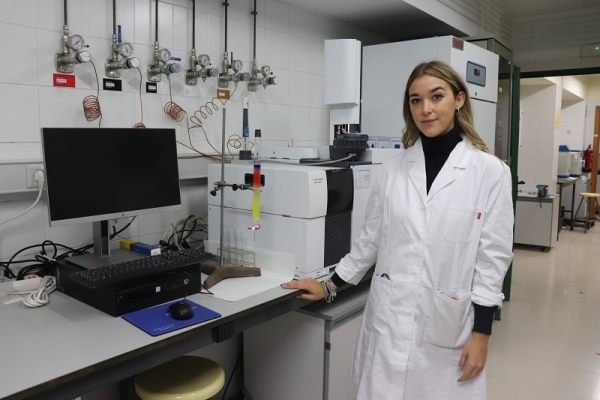The Agri-food industry’s recovery and exploitation of waste from biorefining to obtain raw materials has taken a step forward thanks to the work carried out by the FQM-383 research group at the University of Córdoba, which has managed to develop a process to take partial advantage of biomass waste, until now totally squandered, in a highly valuable compound in the chemical and pharmacochemical industries. The material in question is lignin, from which they have obtained a reagent used in drug synthesis processes for cancer treatments: 2.6-Dimethoxyquinone. The study was carried out in collaboration with the research group of Professor Joseph Samec at Stockholm University.
Lignin is a natural substance that is part of the cell wall of many plant cells, furnishing them with toughness and resistance. 30% of plant biomass is made up of lignin. "It is a complex mixture of polymers, large molecules and high molecular weight, linked by Carbon-Carbon and Carbon-Oxygen bonds," explained principal investigator María Dolores Márquez Medina. The former, which are the most abundant, require critical reaction conditions to break them, such as high temperatures, or the use of nitrogen, which is dangerous.
At this time lignin is taken advantage of by breaking the Carbon-Oxygen bonds that exist in these molecules, which are the minority, with only 36% of the lignin being exploitable. "What we are employing is a new methodology to break these Carbon-Carbon bonds, through an oxidative breakdown, being able to obtain smaller molecules; in our case, benzoquinones, compounds that can be used as raw material in various industries", explained Márquez Medina. "In the article the remaining 64% was processed, increasing the value of lignin by 18%", he added.
In the article the lignin generated as biorefinery waste is recovered and used, obtaining very important products; specifically, 2.6- dimethoxybenzoquinone. This compound is used as a starting reagent in drug synthesis processes for the treatment of cancer. Another product obtained is vanillin, the molecule that adds flavour and smell to things associated with vanilla. "This molecule is obtained in low quantities in a natural way compared to the demand for it on the market, since it is used in the food, pharmacochemical and cosmetic industries, among others", concluded researcher Mª Dolores Márquez Medina. In addition, increasing to 18% the use of lignin to obtain compounds for industrial raw materials is an important step in making biorefining competitive with oil-based refineries.
Reference
Subbotina, E., Rukkijakan, T., Marquez-Medina, M.D. et al. Oxidative cleavage of C–C bonds in lignin. Nat. Chem. 13, 1118–1125 (2021). https://doi.org/10.1038/s41557-021-00783-2


